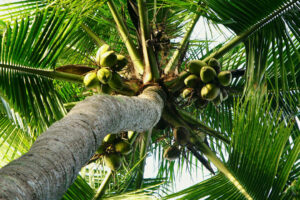
Coco farmers call for bigger role in replanting program
THE Philippine Coconut Authority (PCA) needs to rope in more coconut farmers’ groups and cooperatives in carrying out its tree replanting effort, an industry group said.
“They want the participation of the farmers… they have not been using established farmers’ organizations. I think they are dealing with localized groups as they see fit,” Confederation of Coconut Farmers’ Organizations of the Philippines, Executive Director Charles R. Avila told BusinessWorld.
Last year, President Ferdinand R. Marcos, Jr. ordered the PCA to draft a plan to rehabilitate the coconut industry, including the planting of 100 million coconut trees by 2028.
“(Farmers’ groups) have been waiting for more than a year now since it was first announced that they would be willing to work with the farmers’ organizations. Specifically at the national level,” Mr. Avila added.
The rehabilitation plan aims to address the advanced age of the nut-bearing trees. The PCA is seeking to replant about 8.5 million trees this year.
He said that a majority of the Philippines’ fruit-bearing coconuts are now senile and have become candidates for monetization into coco lumber.
“If they can, for example, plant or replant this year, more than 5 to 8 million, that would be quite an achievement. But how far is that from the 100 million coconut trees that we need?,” he said.
Last week, the President allocated an additional P1 billion to the PCA for the coconut replanting operation in 2025, while an additional P2.5 billion set aside for fertilization.
“It would be a big help if properly used… that is not a small amount. But at the same time, the objective need for replanting cannot be denied,” Mr. Avila added.
Under the Philippine Coconut Industry Development Plan 2024-2034 the replanting project is expected to increase coconut production by 4.7 billion nuts, valued at P33.1 billion, by 2034.
By 2025, the PCA aims to replant 15.3 million, followed by 25.4 million annually between 2026 and 2028.
Mr. Avila also said that the government should allocate more funding towards creating integrated coconut processing plants.
“In that way of thinking, we can have a national structure for industrialization, which we don’t have,” he added.
As of the second quarter, the volume of coconut production rose 1.5% year on year to 3.41 million metric tons, according to the Philippine Statistics Authority. — Adrian H. Halili



